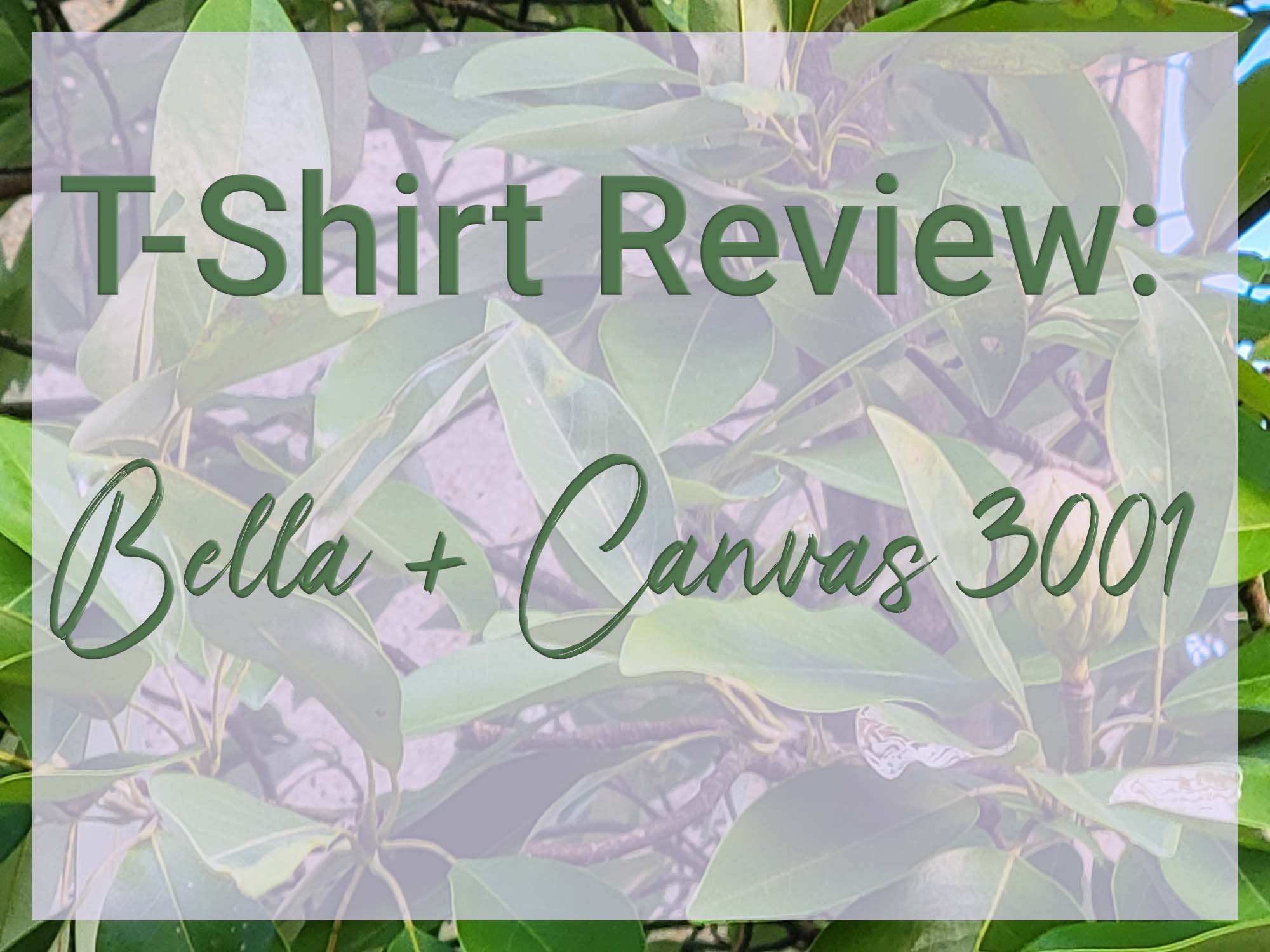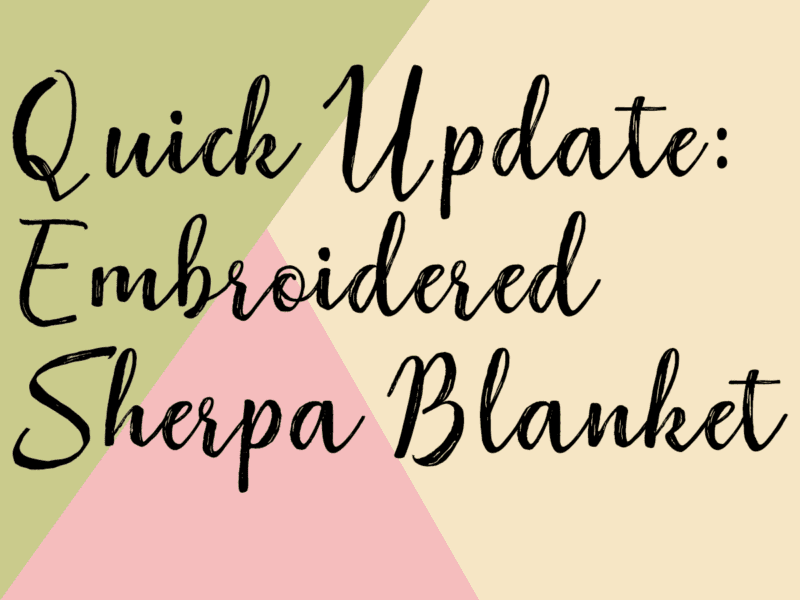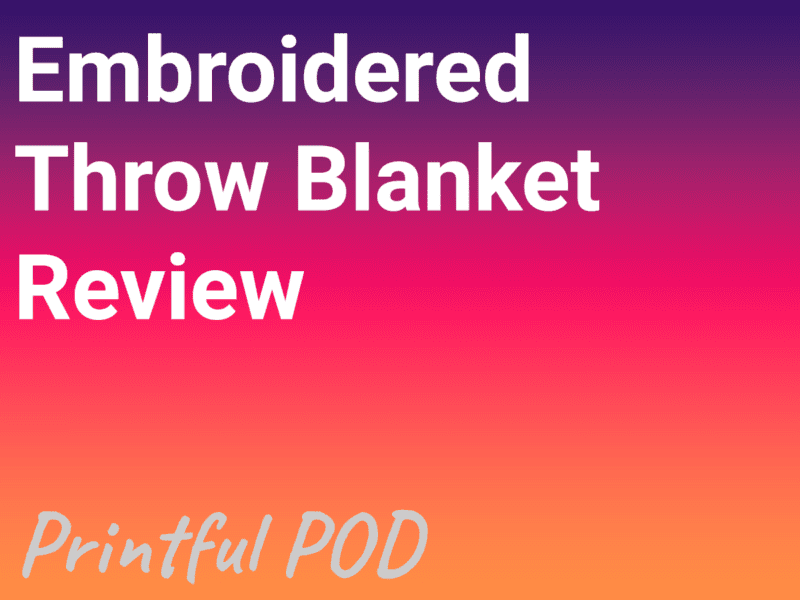Overview
The Bella + Canvas 3001 t-shirt is one of the most widely available options from print-on-demand (POD) vendors in the US. It’s also a perennial bestseller with at least one supplier. All of the vendors I’ve been using for this project – Printful, Printify, and Gooten – stock it in a wide range of sizes and in multiple colors.
Of the nine styles I’ve reviewed so far, the Bella + Canvas 3001 is my top pick for businesses using a print-on-demand model for selling t-shirt. Read on to find out why.
This post is part of a research project into the best print-on-demand t-shirt options. I’ve summarized my findings in a separate post and am also providing more detailed reviews of the individual options.
I’ve sewed and enjoyed a variety of needlework for almost my entire life, having a solid background in textiles and garment construction. I’ve relied on this lifetime of experience as I evaluated each sample.
Methodology
In order to better compare all of the styles, I used the following approach:
- Unisex size XL
- Two colors: 1 black, 1 white (or closest equivalent)
- Same design file. I did have to resize for one or two shirts depending on the vendor, but I was starting with an Illustrator file and so could keep the same resolution.
- Measured 3 points on each shirt upon receipt:
- Center back from base of collar to hem
- Chest width just below the arm hole
- Sleeve length from shoulder seam to hem along the top center
- Washed each shirt twice using the label instructions and then remeasured along the same points.
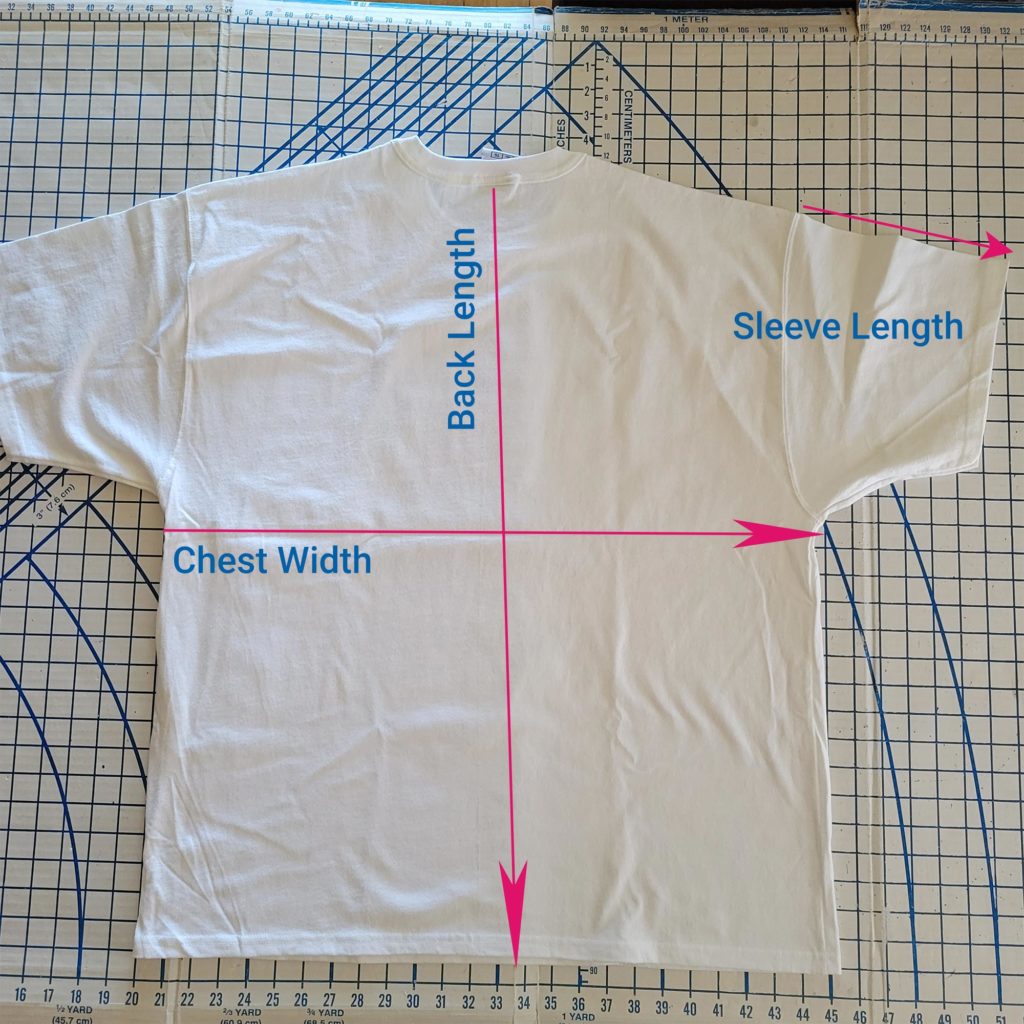
I examined the construction and fabric quality of each sample. The print quality was part of my evaluation, but I considered it a secondary factor for this particular project.
Certain parts of my conclusions – such as about the fabric quality – are a bit subjective. But I’ve tried to balance that out by describing the specific elements that went into my judgment.
Fabric and Construction
Content and Colors
Fiber content varies for the Bella + Canvas 3001 by color. The particular samples I got are made from 100% cotton. It breaks down as
- Solid colors: 100% combed and ring-spun cotton
- Ash and Heather Prism colors: 99% combed and ring-spun cotton; 1% polyester
- Heather colors: 52% combed and ring-spun cotton; 48% polyester
- Athletic and Black Heather: 90% combed and ring-spun cotton; 10% polyester
I would consider this a light-to-medium weight t-shirt jersey. It has a soft hand and smooth surface. According to the manufacturer’s specifications, it’s 4.2 oz. per square yard.
It comes in as many as 63 colors, depending on the supplier (one of the Printify vendors has the most as of this writing). The core size range seen across all suppliers reviewed is unisex XS – 4XL. Printful currently has some limited colors available in size 5XL.
The black and white of the sample shirts are what I would call “true” shades. No heather cast. The white is particularly bright while the black is a slightly soft shade, although with no skewing toward brown.
Construction
The body construction is by the side-seamed method. With this approach, the front and back are cut as separate pieces and then stitched together at the side. The shoulder seams are sewed with the sleeves and collar band being inserted.
As I’ve evaluated all these t-shirts in recent months, it’s become clear that one big advantage of side-seam construction – as opposed to a tubular knit body – is improved accuracy in design placement.
The side seams provide a clear reference point when printing a design on the front or back improving the odds of it being straight. I’ve received a number of samples where the design placement is crooked, and this problem appeared more with the tubular knit shirts as compared to the side-seam shirts.
Of course, the design placement problems could be addressed with better quality control by the printers. But that clearly doesn’t always happen, especially in busy times or when there are staffing shortages.
As a sewist, I also feel like using side-seams is more likely to result in consistent sizing from shirt to shirt. You can always cut a garment piece to size regardless of how the fabric arrives. But if your fabric supplier knit your long tube of fabric a little off, you could have a whole run of shirts that are a too big or small relative to your sizing chart, even taking into account normal manufacturing tolerances.
Styling
This t-shirt is slightly longer than average but with one of the slimmer fits among those evaluated. It has the longest sleeves.
Measurements – Before and After Washing
Sizing was the most consistent between the two sample shirts of those reviewed.
All measurements in inches.
Before Washing
| Color | Center Back | Chest Width | Sleeve Length |
|---|---|---|---|
| Black | 30″ | 22.875″ | 10″ |
| White | 30.25″ | 22.875″ | 10.125″ |
After 2nd Wash
| Color | Center Back | Chest Width | Sleeve Length |
|---|---|---|---|
| Black | 28.125″ | 22.25″ | 9.5″ |
| White | 28.5″ | 22.25″ | 9.5″ |
Shrinkage After 2 Washes
| Color | Center Back | Chest Width | Sleeve Length |
|---|---|---|---|
| Black | 6.3% | 2.7% | 5% |
| White | 5.8% | 2.7% | 6.2% |
As it common with cotton knits of this type, the shirts shrank more in length than in circumference. Overall, these shirts shrank a bit more than average within the test group.
Print Quality
The print quality is better on the black shirt than on the white one in my opinion, at least based on the print file I provided. I feel like the colors are faded or muted on the latter. But for both the design is printed without any skips or gaps and with well-defined details. Neither has started to deteriorate after the first two washes.

I have other white shirts where the color reproduction is much brighter, so it’s not the difference between how DTG printing is handled on light vs. dark colors. Standing alone, the results on this white shirt are fine – it’s when you do a side-by-side comparison that you see the variation.
BTW, an extra white layer is often put down on dark shirts before printing the actual design to improve color reproduction. That’s why the printing on dark shirts often seems thicker than on light colors.
That being said, you will always want to evaluate specific results for your designs in the context of what you want them to look like. Yet another example of why you always get samples from a new vendor!
I did find it interesting – when I put the two shirts side-by-side – that the design is about 1/8″ longer on the black shirt. I suspect this has something to do with how the fabric shrank in specific areas of the shirts – you’re looking at the results after 2 washings (I also failed to fold each exactly in half for the photo…). But certainly nothing that detracts from the overall results.
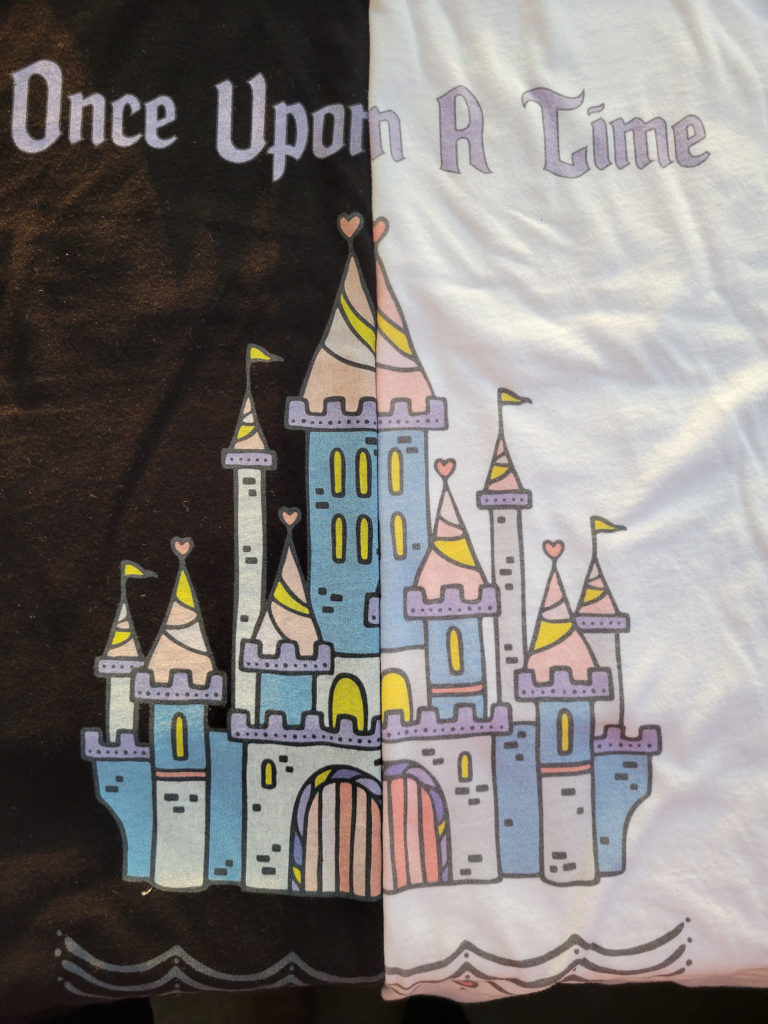
Pricing and Suppliers
As of this writing, all three vendors I used during the research project – Printful, Printify, and Gooten – sell this style in various combinations of colors and sizes.
It’s marketed as a Unisex style although is commonly found under the Men’s sections on the vendor sites. The unisex sizing ranges from Small to 5XL, although only Printful seems to have the 5XL currently available.
Without any volume or other discounts, the base prices started around $9 per shirt when checked on October 8, 2021, with Printify the lowest and Printful the highest. Some colors and the larger sizes cost more.
Overall it fell slightly above average among the models I’ve tested in terms of cost. And don’t forget to check the shipping, particularly for international destinations.
Conclusion
The Bella + Canvas 3001 is my top pick for print-on-demand among the 9 styles I’ve reviewed so far. There’s a reason it’s so popular: reasonable pricing, huge color selection, consistent quality, and broad size range.
It’s not my personal favorite style for a t-shirt (as in, the shirt I would choose to wear). But it really shines in terms of what businesses are looking for when designing and selling t-shirts.
